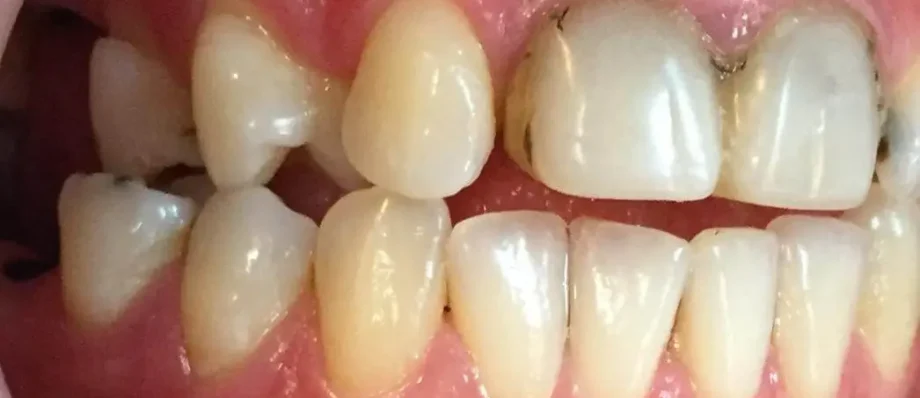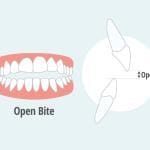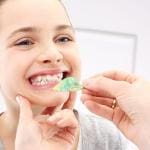A beautiful smile not only enhances one’s appearance but also plays a vital role in oral health and overall well-being. However, various dental conditions can affect the alignment of teeth, leading to functional and aesthetic concerns. One such condition is crossbite, which can impact chewing, speech, and facial symmetry. In this article, we delve into the intricacies of crossbite, exploring its causes, types, diagnosis, and treatment options.
What is Crossbite?
Crossbite is a dental malocclusion characterized by the abnormal alignment of the upper and lower teeth when the jaws are closed. Unlike normal occlusion, where the upper teeth slightly overlap the lower teeth, crossbite results in the upper teeth biting inside the lower teeth (anterior crossbite) or vice versa (posterior crossbite). This misalignment can occur in the front (anterior) or back (posterior) teeth, affecting one or multiple teeth.
Causes of Crossbite
Several factors contribute to the development of crossbite, including:
- Genetics
- Abnormal Tooth Growth
- Habits
- Early Loss of Primary Teeth
- Jaw Misalignment
Genetics
Genetic predisposition plays a significant role in the development of dental malocclusions, including crossbite. Family history of dental irregularities increases the likelihood of inheriting such conditions.
Abnormal Tooth Growth
Irregular tooth eruption or abnormal growth patterns can lead to crossbite. For example, if the upper jaw is narrower than the lower jaw, the upper teeth may develop inside the lower teeth, resulting in a crossbite.
Habits
Prolonged habits such as thumb sucking, tongue thrusting, or prolonged use of pacifiers can affect the development of the jaws and teeth, leading to crossbite.
Early Loss of Primary Teeth
Premature loss of primary (baby) teeth can disrupt the natural alignment of permanent teeth, potentially causing crossbite.
Jaw Misalignment
Skeletal abnormalities or jaw misalignments, such as a narrow upper jaw or a widened lower jaw, can contribute to crossbite.
Types of Crossbite
Crossbite can manifest in different forms, depending on the position of the misaligned teeth. The main types include:
- Anterior Crossbite
- Posterior Crossbite
Anterior Crossbite
In anterior crossbite, the upper front teeth are positioned behind the lower front teeth when the jaws are closed. This condition can affect the appearance of the smile and may lead to uneven wear of the affected teeth.
Posterior Crossbite
Posterior crossbite occurs when the upper teeth bite inside the lower teeth on one or both sides of the mouth. This misalignment can affect chewing function and may lead to asymmetrical jaw growth if left untreated.
Diagnosis of Crossbite
Diagnosing crossbite typically involves a comprehensive dental examination conducted by a qualified dentist or orthodontist. The diagnostic process may include:
- Clinical Examination
- Dental X-Rays
- Dental Impressions
- Photographic Records
Clinical Examination
The dentist examines the patient’s teeth, jaws, and bite relationship to identify any signs of crossbite. They may also assess the patient’s dental and medical history to understand potential contributing factors.
Dental X-Rays
X-rays provide detailed images of the teeth, jaws, and surrounding structures, allowing the dentist to assess the extent of the crossbite and any underlying skeletal abnormalities.
Dental Impressions
Taking dental impressions helps create models of the patient’s teeth, which can be used for further analysis and treatment planning.
Photographic Records
Photographs of the patient’s face and smile from different angles may be taken to document the existing condition and monitor treatment progress.
Treatment Options for Crossbite
The treatment of crossbite depends on various factors, including the severity of the condition, the patient’s age, and their overall dental health. Common treatment options include:
- Orthodontic Treatment
- Palatal Expansion
- Tooth Extraction
- Surgical Intervention
- Functional Appliances
Orthodontic Treatment
Orthodontic appliances such as braces or clear aligners can be used to gradually move the misaligned teeth into their proper position. This approach is effective for mild to moderate cases of crossbite.
Palatal Expansion
In cases where a narrow upper jaw contributes to crossbite, a palatal expander device may be used to widen the palate gradually. This helps create additional space for the upper teeth, correcting the crossbite.
Tooth Extraction
In some cases, removing one or more teeth may be necessary to create space and facilitate proper alignment of the remaining teeth.
Surgical Intervention
Severe cases of crossbite or skeletal abnormalities may require surgical correction, which involves repositioning the jawbones to achieve a proper bite relationship.
Functional Appliances
Functional appliances such as bite plates or bite blocks may be used to correct crossbite by guiding the growth and development of the jaws in children and adolescents.
Conclusion
Crossbite is a common dental malocclusion that can affect individuals of all ages. While it may initially seem like a cosmetic concern, untreated crossbite can lead to various oral health issues and functional problems. Therefore, it is essential to seek timely diagnosis and appropriate treatment from qualified dental professionals. With advancements in orthodontic techniques and treatment modalities, correcting crossbite and achieving a harmonious bite relationship is achievable, restoring both function and aesthetics to the smile.





